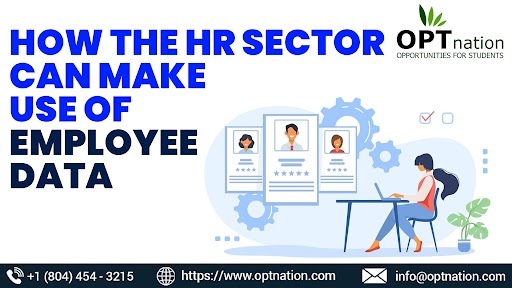Modern technology offers countless advantages, but one of the best features is its ability to provide people with valuable data.
Like any other type of data, employee data equips companies with powerful insights they can use to improve various features within the business. However, the HR sector undoubtedly makes the most use of employee data since it caters strictly to employees.
If you’re running a business or the HR sector of a company, learning more about employee data is highly important. That’s why we covered all employee data essentials below, including how the HR staff can implement data insights in the best possible way.
More about employee data
First things first, let’s say something more about employee data. Generally speaking, employee data is every piece of employee-related information a company gathers and stores. It can contain essential and specific data, depending on the information companies gather.
For example, essential data includes the date of birth, ethnicity, and other demographic details. On the other hand, specific data contains information about workplace performance, training programs, promotions, and other work-related details.
Companies don’t typically share employee data, except for public employee data. These datasets contain only basic information such as name, location, position title, institution name, and employee skills.
The primary purpose of collecting and analyzing employee data is to help executives and other decision-makers improve the company culture and stay on top of all employee trends. There are different types of employee data, such as:
- Personal details (full name, date of birth, home address, etc.);
- Employment status (full-time, part-time, or freelance);
- Length of employment;
- Attendance logs;
- Overall performance;
- Compensation details;
- Recruitment information;
- Training courses and certifications.
Employee data categories
As you can see, employee data covers all kinds of information about employees. Here are some categories of employee data companies are most interested in exploring.
1. Demographics
Demographic information is probably the most common type of employee data companies and organizations collect. Demographic data contains employees’ age, gender, marital status, and education.
Simply put, demographic data says more about staff diversity present in a company. Therefore, it doesn’t say much about the interests and personalities of employees. Still, it helps companies build a more inclusive work environment.
2. Qualifications
Another essential employee data category covers the qualifications of team members. Namely, this category focuses on gathering information about professional experiences, previous job roles, training, and skills.
With qualifications data by their side, companies have the necessary insights for building beneficial workforce development strategies and recruiting people with the corresponding candidate profile.
By combining employees’ qualifications and previous work experiences, companies can offer the necessary staff training or simply get the most out of internal recruitment.
3. Attendance
Finally, companies pay attention to the details relating to their employees’ attendance and time off. Examining attendance records helps employers learn more about their staff members’ work performance.
For instance, companies gather information about whether team members show up at work on time, take too many or too few breaks, and how often they go on vacations or call in sick. Having this information available helps businesses manage productivity and reduce absenteeism.
How HR can use employee data
Now that you know a little bit more about employee data and the role it has in organizations and companies, it’s time to focus on the different ways the HR sector can make use of this type of data:
- Make hiring more effective: HR experts can use employee datasets to streamline their screening processes by creating a connection between workforce engagement and productivity.
- Recruit diverse talent: Employee datasets eliminate all biased factors preventing recruiters from making data-driven and unbiased decisions. As a result, companies can recruit people from a more diverse talent pool.
- Predict staffing needs: No one can know what the future brings. Nevertheless, employee data can help companies gain insights into likely scenarios, which allows them to predict staffing needs and make informed decisions.
- Optimize HR costs: Companies always look for more cost-effective solutions. The HR department takes a big chunk of a business’s budget, so optimizing HR costs is an excellent way to improve the company’s finances.
Bottom line
It’s safe to say employee data is valuable to businesses of all sizes and industries. What’s more, companies can truly transform their HR sector once they introduce employee datasets.
These pieces of information provide company owners and HR experts with helpful insights that allow them to upgrade and streamline most of their employee-related processes.

